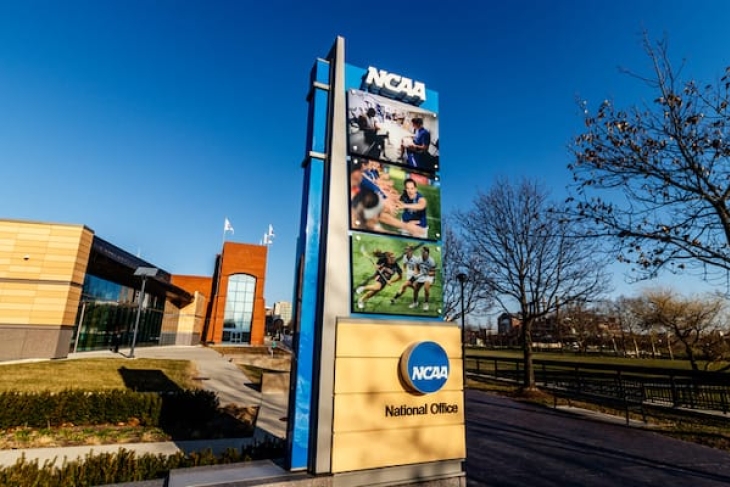The NCAA cares a great deal about college readiness, access, and success. As we work to stay current on trends and issues in education, one of our greatest challenges is maintaining an open mind to innovation in the field of education, while also guarding against propensities for shortcuts. Nowhere is this more difficult than with online learning and credit recovery (CR).
The NCAA first became aware of CR programs in 2008, when students’ transcripts showed failing grades replaced with A’s, often with course titles that included a specific designation such as “CR.” We also observed transcripts where D’s and C’s were replaced with A’s—showing that credit recovery programs are used not only to recover credits, but also to earn higher grades. As we collected more data about these courses, we discovered students receiving grades and credits for a semester’s worth of work — sometimes even an entire year’s worth of work—in a matter of days, sometimes hours, and in a small number of cases just minutes. In a common example, one student received a year’s worth of credit and an A-minus after completing a credit recovery biology course in four hours and thirty-six minutes over a two-day period. The most egregious case was a student who earned a semester’s worth of credit and an A for credit recovery Algebra 1 after completing a single assessment with a course completion time of one minute.
Other documentation showed these programs often had little or no instruction and shockingly low levels of rigor:
- One credit recovery program allowed students to repeat incorrectly answered true/false questions and still earn 80 percent for that item.
- A geometry assessment asked students the following true/false questions: “A dog has four legs” and “A cat has ten lives.”
- A computer-graded assessment in an English 3 credit recovery course deemed the following prompt and student response as “Correct.”
- Prompt: Describe a brief encounter that you have experienced in the last month and explain whether it made you feel good or bad.
- Student response: “i was playing basketball and this kid fouled me really hard and cut my finger I was so mad that once i got the ball again i dunked so hard that i made the cut worse. It made me feel bad cause now i can’t play for a week” [sic].
After working with experts in the field of online learning, the NCAA adopted a rule in 2010 intended to address concerns observed in credit recovery and other types of online programs. To be approved for NCAA eligibility, there are two primary criteria—beyond the criteria used to determine whether a course’s content and rigor meet NCAA general requirements—credit recovery and online programs must meet.
First, credit recovery programs must include ongoing and regular teacher-initiated instructional interaction throughout the duration of a course. This means the role of the teacher must go beyond “good job” and “keep it up” when interacting with students. Instead, teachers must be actively engaged in the learning process, perhaps by pushing students toward deeper levels of understanding or delivering differentiated instruction for students struggling with a concept or skill.
Second, credit recovery programs must also have a defined time frame for completion. The NCAA doesn’t prescribe the measuring stick here. It’s up to schools and districts to determine whether they want to define the timeframe for completion in terms of minutes, hours, weeks, months, or terms. What’s important is we have assurance students aren’t permitted to race through courses in academically unsound timeframes.
As part of our review process, schools respond to a series of questions about the role of the instructor, course pacing, curriculum and assessment, etc. Since 2010, we have reviewed thousands of credit recovery and other online schools and programs. And while we have approved many of those programs, most commonly those focused on original credit coursework, the overwhelming majority of credit recovery programs fail to provide students the academic foundation for successful completion of academic work at the four-year-college level. In many credit recovery environments, schools tell us students are permitted to finish the courses as quickly as they are able. Teachers typically are not expected to engage with students, except on an as-needed basis. In fact, schools tell us support staff members who supervise credit recovery labs often serve as the de facto teacher.
We’ve received both praise and criticism for our review process—and we’ve learned a lot along the way. We know, for instance, that in the same way you can’t say charter schools (or any other broad genre of schools) are “good” or “bad,” you cannot say credit recovery (or other forms of online or competency-based models) are “good” or “bad.” Tremendous variability exists in the ways schools and districts implement these programs. We’ve observed that, when districts and schools make substantial investments in infrastructure, professional development, and an ongoing commitment to academic rigor, they most often are approved. Programs designed to move students through as quickly and inexpensively as possible, on the other hand, typically face difficulty gaining approval. Our hope is that by closing doors to these types of courses, students find other pathways to academic success.
We’re thankful for partnerships we’ve built with practitioners and experts in the field who continue helping us improve and adapt. We applaud Fordham for its close examination of credit recovery and hope practitioners, researchers, and policymakers will work together to ensure authentic learning experiences for all students.
Nicholas Sproull is the Director of the NCAA Eligibility Center.

